
Friday, June 29, 2018
Sintering atomically thin materials with ceramics now possible
For the first time, researchers have created a nanocomposite of ceramics and a two-dimensional material, opening the door for new designs of nanocomposites with such applications as solid-state batteries, thermoelectrics, varistors, catalysts, chemical sensors and much more.
The culprit of some GaN defects could be nitrogen
Scientists present their findings of examining and determining six core configurations of the GaN lattice.

Researchers simulate simple logic for nanofluidic computing
Invigorating the idea of computers based on fluids instead of silicon, researchers have shown how computational logic operations could be performed in a liquid medium by simulating the trapping of ions (charged atoms) in graphene (a sheet of carbon atoms) floating in saline solution.

New coatings make natural fabrics waterproof
Researchers developa process that could offer nontoxic alternative to environmentally harmful chemicals.

New testing finds synergistic combination leads to toxicity in nanomaterials
A new study finds reason for caution - a clear emergence of toxicity - in nanomaterial product formulations, but it also provides an early testing technique that could help the industry continue to move forward.
Eradicating cancer with immune cells armed with nanorings
Can we use nanotechnology to transform our own immune cells into cancer serial killers?

New insights bolster Einstein's idea about how heat moves through solids
New research about the transfer of heat suggests that in thermal insulators, heat is conveyed by atomic vibrations and by random hopping of energy from atom to atom.

Thin and flexible organic photovoltaic devices engineered to resist both mechanical and thermal stress
Advanced polymer design enables high-performance solar cells to be coated onto textiles.

Thursday, June 28, 2018
Nanoaggregation on command
Light-controlled reversible aggregation of microtubules mediated by paclitaxel-modified cyclodextrin.

Building bridges with water molecules
Scientists now have the proof behind the speculations that water molecules can form complex bridge-like structures when they accumulate on mineral surfaces.

Nanostructured light mixer generates 11 colors simultaneously
A multicolor laser pointer you can use to change the color of the laser with a button click - similar to a multicolor ballpoint pen - is one step closer to reality thanks to a new synthetic nanomaterial.

New graphene photodetector could improve night vision, thermal sensing and medical imaging
Using graphene, engineers have invented a new type of photodetector that can work with more types of light than its current state-of-the-art counterparts. The device also has superior sensing and imaging capabilities.

Chemical reactions in the light of ultrashort X-ray pulses from free-electron lasers
Using a ring of 16 detectors and a circularly polarized laser beam, scientists can determine duration and energy of ultra-short, high-intensity X-ray flashes with attosecond accuracy.

New solar technology with 2D semiconductor nanomaterials
Physicists are developing and testing innovative 2D nanomaterials for possible use as high-efficiency solar cells.

Strong interactions between photons mediated by a single atom
Physicists observe strong interactions between photons of different colour in an atom-cavity system.

Scientists fine-tune carbon nanotubes for flexible, fingertip-wearable terahertz imagers
Researchers have developed flexible terahertz imagers based on chemically 'tunable' carbon nanotube materials. The findings expand the scope of terahertz applications to include wrap-around, wearable technologies as well as large-area photonic devices.

Wednesday, June 27, 2018
Tricky feat with stand-up molecule
Researchers have achieved a new level of precision working with single molecules. They succeeded in placing an ultrathin molecule in an upright position on a flat layer of silver atoms - and the molecule remained standing instead of reverting to its naturally favoured position.

Finding the right balance for catalysts in the hydrogen evolution reaction
Researchers optimize the tradeoff between catalyst activity and stability in acidic liquids.

BNAs improve performance of Li-ion batteries
Scientists investigated the effect of hierarchical Bi2MoO6 nanosheet arrays growing on three-dimensional Ni foam synthesized by one-step template-free route.

Composite material mimics color changes of living organisms
Researchers have developed a composite material that, by adjusting its composition and exposing it to different types of light, can mimic animals' changes in color.

The ultimate 'smell test': Device sends rotten food warning to smartphones
Sientists report that they have developed a wireless tagging device that can send signals to smartphones warning consumers and food distributors when meat and other perishables have spoiled.

Thermal camouflage disguises hot and cold
A new type of camouflage makes a human hand invisible to a thermal camera.

How to gather many merry people at a party?
Scientists have managed to control the photon energy density inside opaque materials such as white paint.
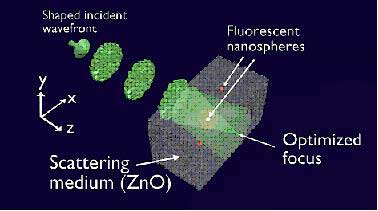
Tuesday, June 26, 2018
Fluorescence imaging technique goes from micro to macro, moves closer to clinic
FLIM used to analyze whole mouse tumor with cellular resolution.
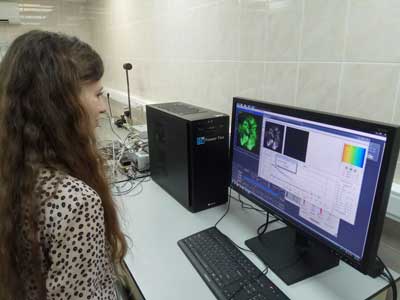
Nanoscale membrane both isolates and couples living and non-living catalysts
Innovation paves the way for scaling up biohybrid systems to synthesize fuels, chemicals.
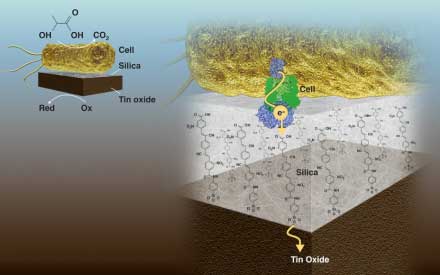
Shining a light on gene regulation
This promising method involves coating nanoparticles with gene-regulatory agents and then exposing them to a dose of laser light to unleash that material.
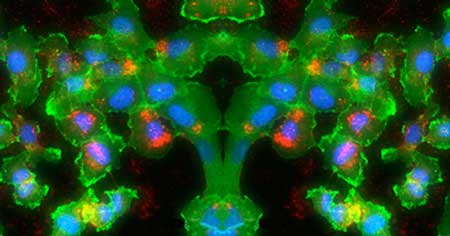
New metasurface tech improves ability to reflect sound back to its source
Researchers have developed a device that reflects sound in the direction it came from, rather than deflecting it at an angle. The 'retroreflector' can reflect sound across an operating range of 70 degrees in either direction -- more than doubling the effective range of previous technologies.
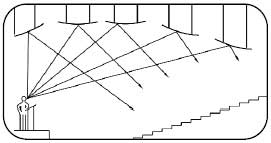
Electron paramagnetic resonance in modern carbon-based nanomaterials
Electron Paramagnetic Resonance in Modern Carbon-Based Nanomaterials, is a new book which attempts to fill the abovementioned void by compiling key contributions for researchers interested in the electron paramagnetic resonance study of the carbon-containing thin films, nanomaterials, ceramics, porous materials, etc.
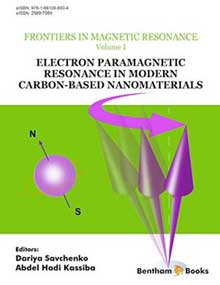
Nanocellulose-coated PET film provides low-cost, sustainable option for food packaging
Researchers have developed a large-scale manufacturing process that may change the way some grocery store foods are packaged.

Research on cancer-frying nanoparticles heats up
Scientists have improved the performance of magnetic nanoparticles designed to roast and destroy tumors.
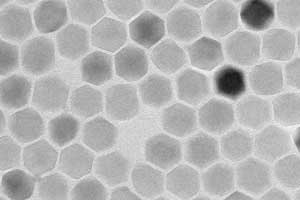
Twisted meta-molecules as they really are
Physicists have devised a clever way to truly test the chirality of a material, eliminating the risk of false positives from other techniques.
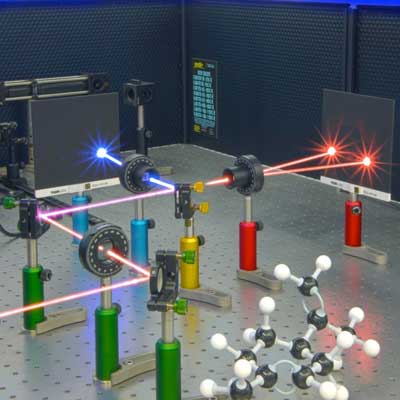
Nanotweezer lab-on-a-chip holds promise of early cancer diagnosis
Researchers used plasmonics to develop a new kind of nanotweezers that can rapidly trap and detect molecules, viruses and DNA - a device transformative for medicine that also has color printing applications.
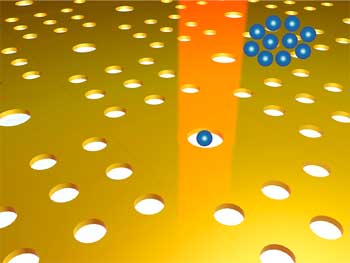
Asymmetric plasmonic antennas deliver femtosecond pulses for fast optoelectronics
Researchers have succeeded for the first time in generating ultrashort electric pulses on a chip using metal antennas only a few nanometers in size, then running the signals a few millimeters above the surface and reading them in again a controlled manner.
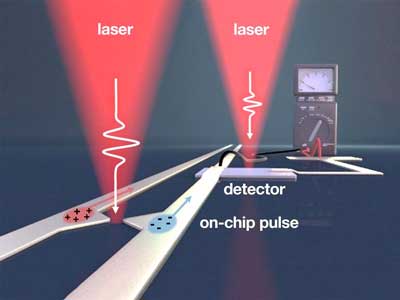
Efficient, eco-friendly production of fine chemicals with single-atom catalyst
Chemical engineers have developed a new catalyst for forming a bond between two carbon atoms in a cost-effective and eco-friendly way.
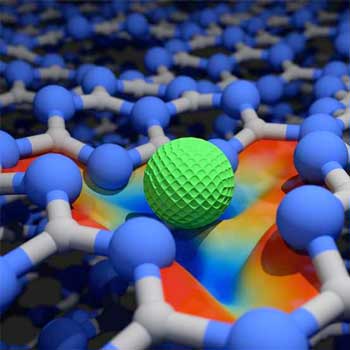
Engineer creates new design for ultra-thin capacitive sensors
The thin and flexible sensor is ideal for sensing sounds because it can move with the airflow made by even the softest noises and addresses issues with accelerometers, microphones and many other similar sensors.
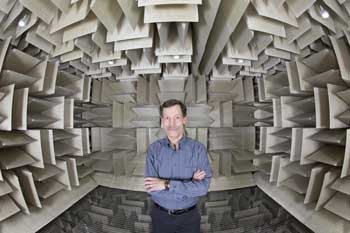
Team's e-whiskers may be a touchstone for future of electronic skin
Researchers used shape-memory polymers to create artificial, electronic versions called e-whiskers, which mimic the properties of the real thing.
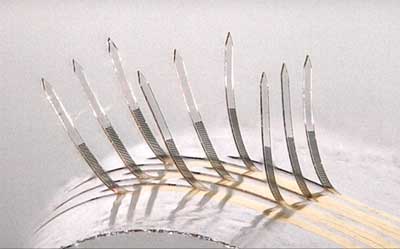
Nanomaterials could mean more algae outbreaks for wetlands, waterways
High tech metal particles may inadvertently take a toll on aquatic life.
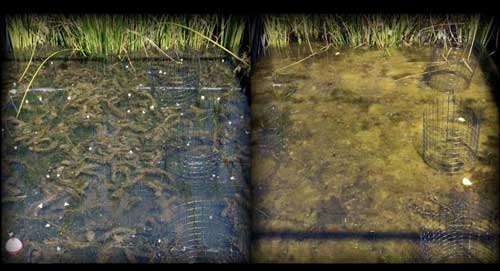
Monday, June 25, 2018
No barrier to applications for a remarkable 2D material
An innovative technique for growing large, uniform sheets of single-layer molybdenum disulfide could lead to new flexible electronic and optoelectronic devices.

Ligands control nanowire growth
Thiol molecules drive gold atoms to form a forest of nanowires with useful properties.
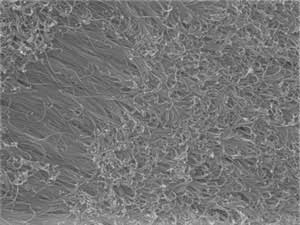
Friday, June 22, 2018
'Stealth' material hides hot objects from infrared eyes
Infrared cameras are the heat-sensing eyes that help drones find their targets even in the dead of night or through heavy fog. Hiding from such detectors could become much easier, thanks to a new cloaking material that renders objects -- and people -- practically invisible.
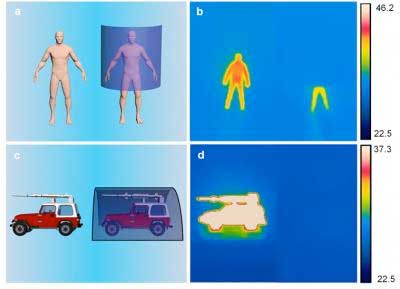
Superconducting vortices quantize ordinary metal
Researchers have discovered that a genuine feature of superconductors -- quantum Abrikosov vortices of supercurrent -- can also exist in an ordinary nonsuperconducting metal put into contact with a superconductor.
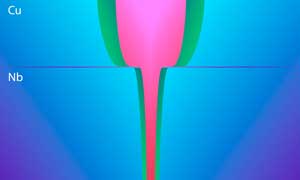
The photoelectric effect in stereo
In the photoelectric effect, a photon ejects an electron from a material. Researchers have now used attosecond laser pulses to measure the time evolution of this effect in molecules. From their results they can deduce the exact location of a photoionization event.
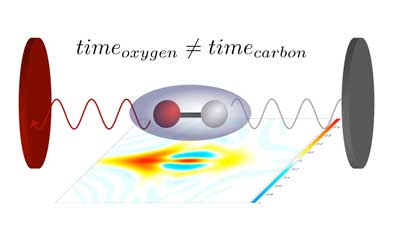
Insulator-metal transition at the nanoscale: x-ray holography reveals existence of nano-patchwork
In a recent study, researchers have finally been able to probe the phase transitions that occur in thin films of vanadium dioxide using resonant soft X-ray holography.

Is nature exclusively left-handed? Using chilled atoms to find out
Elegant techniques of trapping and polarizing atoms open vistas for beta-decay tests of fundamental symmetries, key to understanding the most basic forces and particles constituting our universe.
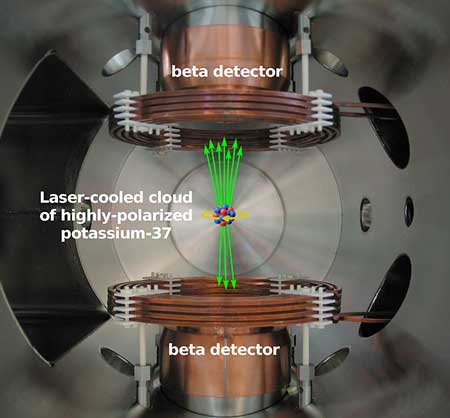
As future batteries, hybrid supercapacitors are super-charged
A new supercapacitor could be a competitive alternative to lithium-ion batteries.
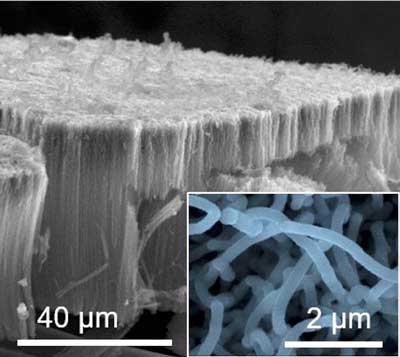
Sense like a shark: Saltwater-submersible films
A nickelate thin film senses electric field changes analogous to the electroreception sensing organ in sharks, which detects the bioelectric fields of prey.
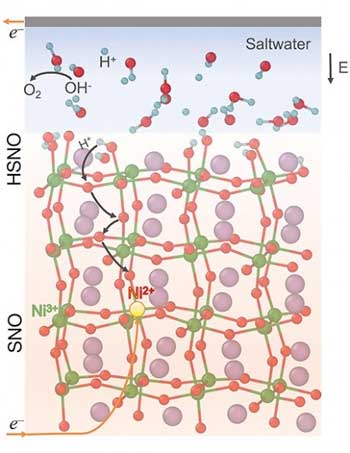
Thursday, June 21, 2018
Researchers solve major challenge in mass production of low-cost solar cells
Spray coating could make perovskite an inexpensive alternative to silicon for solar panels.
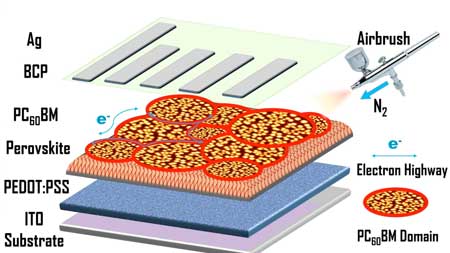
Beyond conventional solution-process for 2-D heterostructure
Researchers demonstrated a facile wet-chemical method to directly grow organic-inorganic hybrid perovskite nanocrystals on surfaces of dispersible MoS2 nanosheets.
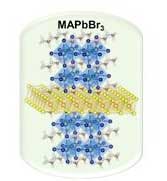
Scientists print sensors on gummi candy
Printing microelectrode arrays on gelatin and other soft materials could pave the way for new medical diagnostics tools.

Thermal radiation from nanoparticles
Scientists have succeeded in performing time-resolved measurements of the internal energy distribution of stored clusters. The clusters investigated consisted of four cobalt atoms and an additional electron.

When fluid flows almost as fast as light - with quantum rotation
Quark-gluon plasma is formed as a result of high energy collisions of heavy ions. After a collision, for a dozen or so yoctoseconds, this most perfect of all known fluids undergoes rapid hydrodynamic expansion with velocities close to the velocity of light.
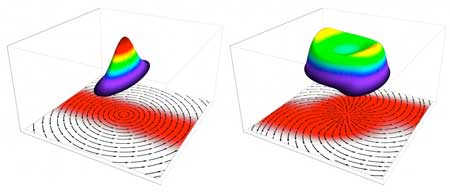
Subscribe to:
Posts (Atom)
